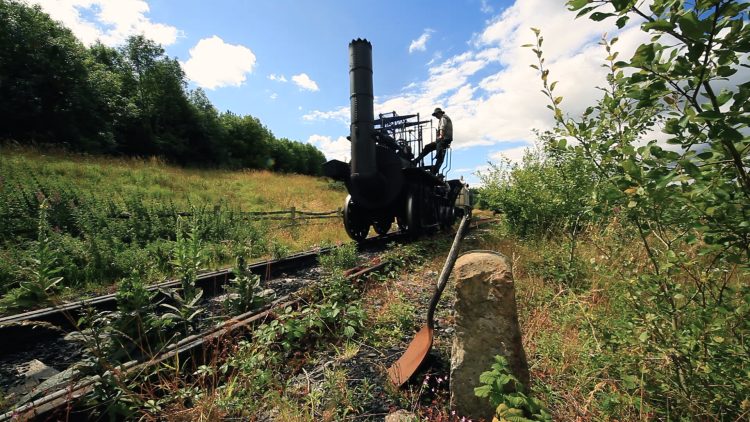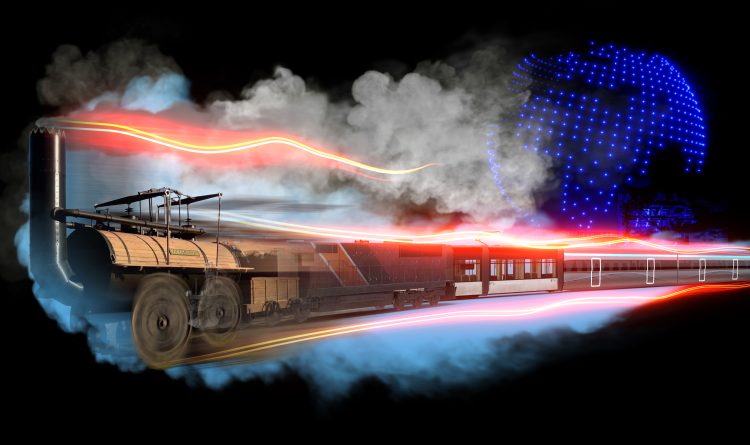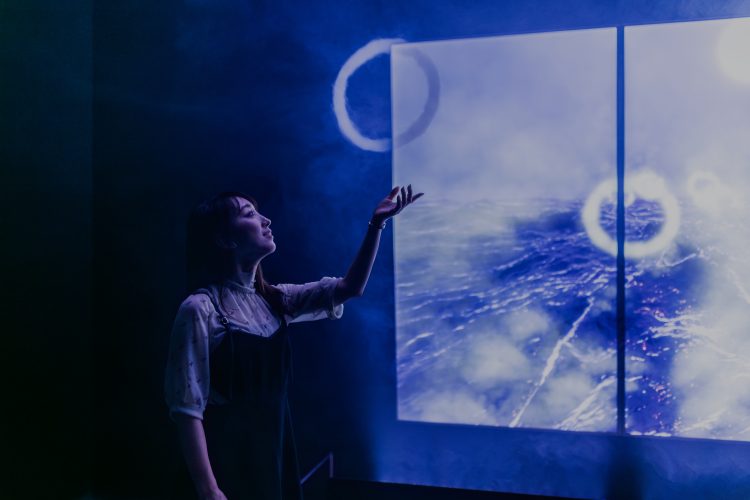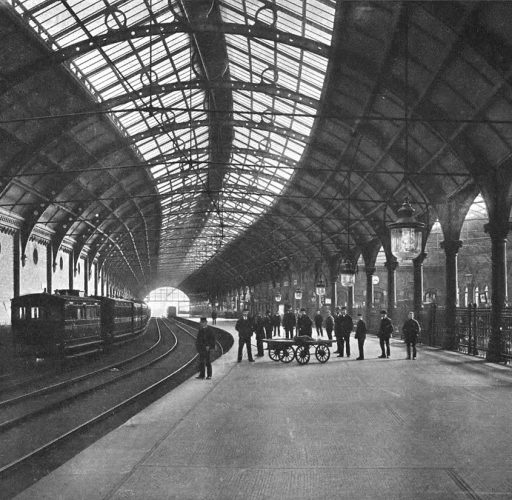Celebrating 200 Years of Rail: Stockton and Darlington Railway
Posted: 9 January 2025 | Niccy Hallifax | No comments yet
The 27th September 2025 marks the 200th anniversary of the opening of the Stockton and Darlington Railway (S&DR) in the north east of England, a pivotal moment in history which gave birth to the modern railway.


To celebrate this significant anniversary, the S&DR200 festival has been created. From March to November 2025, this nine-month festival will transform County Durham and Tees Valley into an epicenter of railway heritage, culture, and innovation. S&DR200 will celebrate the region’s pioneering past whilst looking forward to its future, with a series of large-scale outdoor events, exhibitions and new art commissions held in public spaces, libraries, and world class museums.


Locomotion No.1 Replica in Steam Beamish. Courtesy of Lonely Town Film Media
The first public journey on the S&DR took place on 27 September 1825 from Shildon to Stockton, via Darlington. It had been tested prior to this, but on this date the locomotive, Locomotion No. 1, pulled several waggons of coal and goods, and a carriage called Experiment with fare-paying passengers. Nearly 600 people, many of whom didn’t buy a ticket fare, were clinging to the train by the time it arrived at Stockton harbour. This momentous journey of 26 miles, 200 years ago, led to the birth of the modern railway.
This momentous journey of 26 miles, 200 years ago, led to the birth of the modern railway.
The first line connected collieries near Shildon to Darlington and the River Tees at Stockton Harbour. Over the next five years further branch lines were established. By 1830 the line was extended to a new deep-water port at Middlesbrough, the world’s first planned railway town, and the world’s earliest known purpose-built wayside station opened at Heighington in 1827.
Timothy Hackworth, who had been appointed superintendent of locomotives at S&DR, oversaw advances in the technology and reliability of the engines. Engineers from France, Prussia (which included parts of modern-day Germany, Russia, Poland, Denmark, Belgium, and the Czech Republic) and the USA were hosted, taking away ideas to start planning and building railways across the world.


The success of steam engines on the S&DR persuaded the directors of the Liverpool and Manchester Railway (L&MR) to hold a competition to find the best locomotives for use on a new railway between the two cities (both were major manufacturing centres at that time). In 1829 the speed trials took place at Rainhill, Lancashire (now Merseyside). The Rainhill Trials catalysed many years of continued ingenuity in rail engineering. George and Robert Stephenson, and Timothy Hackworth were among the competitors of the nine-day competition. The Trials tested a variety of self-propelled steam locomotives for use on the L&MR.
George and Robert Stephenson, and Timothy Hackworth were among the competitors of the nine-day competition. The Trials tested a variety of self-propelled steam locomotives for use on the L&MR.
Robert Stephenson’s locomotive Rocket was the winner and the L&MR opened on 15 September 1830. It was a significant step forward in incorporating all the lessons learned by the S&DR and moving railway history forward into a new era.
S&DR played a vital role in the railway revolution which led to the spread of railways worldwide, changing how the world travelled, traded, and communicated. Railways became a cornerstone of the global economy and are a vital part of everyday life for millions around the world.
But the S&DR200 Festival is more than just a historical commemoration. It represents a unique opportunity for the region to reflect on its pioneering past while inspiring future generations. The birth of the modern railway is a legacy that has shaped not only the UK but the world, and the festival will reignite that story with renewed energy and focus. Events during S&DR200 will explore the historical impact of the S&DR while looking forward to the future of transportation, technology, and STEAM (Science, Technology, Engineering, Arts, and Maths) careers. This focus on education and future opportunities will play a key role in inspiring young people across the region to explore careers in these vital fields, driving the next wave of innovation.
With a £57 million investment across the region, key sites like Preston Park Museum & Grounds, Hopetown Darlington, and Locomotion in Shildon will be transformed and expanded, offering visitors even more opportunities to engage with the rich railway history of the region. These world-class attractions will be central to the festival’s celebrations, providing an unforgettable experience for those visiting from around the world.


From April to June, Hopetown will present Railway Pioneers, an exhibition looking at the engineering innovation that inspired Stephenson, the father of the railways, leading up to the opening of Stockton & Darlington Railway in 1825. There will be three iconic locomotives from history on display: Pen-y-Darren, designed by Richard Trevithick, 1804, Steam Elephant, designed by John Buddle and William Chapman, 1815 and Locomotion No. 1 designed and driven by George Stephenson on the first S&DR journey in 1825. From July to October, Hopetown will present STEAM to the future, an artistic exhibition on the history of steam railways and the future of green transport options.
From July to October, Hopetown will present STEAM to the future, an artistic exhibition on the history of steam railways and the future of green transport options.
The exhibition will feature an immersive installation from Japanese and British artist studio, Studio Swine. The work will celebrate the ethereal essence of steam, whilst showing the mechanics of how momentum and physics are the driving force behind how steam engines are powered. The exhibition will encourage us to look to the future, and how the industry is gearing up for the second revolution, a green one. It will explore the future of power, transport and skills in the era of climate crisis and amidst a growing green technologies sector in Teesside and County Durham.
Locomotion in Shildon is also offering a wealth of events and activities during the festival. In February, Rail Firsts will open, an exhibition highlighting a trail of trains, objects and innovations that were world-firsts. As part of this exhibition there will be a line up of early locomotives for visitors to explore. From June, Locomotion will host an exhibition of the winning and commended photographs from the second iteration of The National Railway Museum & the Railway Photographic Society’s nationwide competition to find the Young Railway Photographer of the Year. Locomotion will also become home to the statue of Robert Stephenson usually found at London Euston, which will be relocated thanks to Network Rail.


S&DR200 highlights include All Change, an evening open-air show created by SKYMAGIC and imitating the dog on 29 March, which will combine technology, live performance, and drones to kick off the festival with a bang; The S&DR Discovery Trail, a public walk and cycling path between Witton Park and Stockton in County Durham, along the original 26-mile S&DR route, and Trail of Discovery, an interactive game created by Teesside University where players can collect tokens to build locomotives, travelling through history and locations; Tracks of Change, the inaugural exhibition to open new Gallery wing of Preston Park Museum and Grounds, with multiple presentations, including 19th-century paintings of national importance and immersive presentations from Rebecca Louise Law and Yann Nguema.
There will also be a week of events and activities for the S&DR Anniversary Celebration beginning on 20th September. The celebrations will include a two-part Ghost Train outdoor performance in Darlington and Stockton, featuring a procession of large-scale art installations representing the world’s most pivotal modern inventions through Darlington, and a spectacular re-imagining of Locomotion No. 1 in Stockton the following week. There will also be an exciting re-enactment of the first journey on the S&DR, using a newly renovated replica of Locomotion No. 1, the passenger carriage Experiment and coal waggons, which will run on sections of the original S&DR line over three days.
There will also be an exciting re-enactment of the first journey on the S&DR, using a newly renovated replica of Locomotion No. 1, the passenger carriage Experiment and coal waggons
These just touch the surface of the number of amazing activities happening across the nine months of the S&DR200 festival. S&DR200 is using a world-changing historical event that took place in the region as a starting point to explore the future. The festival programme will cater for all visitors including the railway enthusiasts as well as engage a younger generation, by finding new and inventive ways to tell the pioneering S&DR story. We will create magical moments using art, creativity and culture to show international audiences and young people how science, technology, engineering, arts and maths can not only change your own life but transform the world.
S&DR200 is delivered by Darlington Borough Council, Durham County Council and Stockton-on-Tees Borough Council. The festival’s major funders are Arts Council England, Tees Valley Combined Authority, National Lottery Heritage Fund and Network Rail. It is part of the Railway 200 campaign. More information can be found at https://www.sdr200.co.uk/


Global Railway Review Autumn/ Winter Issue 2025
Welcome to 2025’s Autumn/ Winter issue of Global Railway Review!
The dynamism of our sector has never been more apparent, driven by technological leaps, evolving societal demands, and an urgent global imperative for sustainable solutions.
>>> Read the issue in full now! <<<



